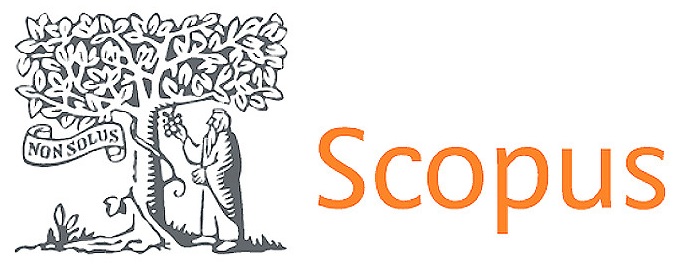Manifestations of gender stereotyped patterns in activities in digital environments of Chilean university students
DOI:
https://doi.org/10.56294/saludcyt2024.1335Keywords:
Stereotypes, Gender, Network activity, University studentsAbstract
Introduction: gender stereotypes are transmitted from generation to generation and become naturalized, making it difficult to deconstruct gender roles. Digital environments are not free of these stereotypical patterns, perpetuating values and social roles related to gender. The objective of this research is to identify activities in digital environments of Chilean university students that may be associated with gender stereotypical behaviors.
Methods: 324 women and 185 men aged 18 to 27 were evaluated through a questionnaire with a six-level Likert scale, where information was collected on the frequency with which students provided information and carried out actions on networks. Significant differences between sexes were analyzed using Mann-Whitney U.
Results: women are more likely to provide personal information when requested. Men are more likely to use aliases, include avatar photos, and accept strangers into their networks. Women update their profile picture more and check who sees their posts. Men tend to make public more sensitive personal information such as political tendencies and religious beliefs.
Conclusions: college students engage in stereotypical gender behavior on digital networks. These stereotypical behaviors condition students' behavior on social networks, leading to a migration from the analog to the digital world in terms of types of behavior, perpetuating social gender roles.
References
1. González-Gijón G, Alemany-Arrebola I, Ruiz-Garzón F, Ortiz-Gómez M del M. Gender stereotypes in adolescents: An analysis in a multicultural context. Rev Colomb Educ. 2024;(90):164–84. http://dx.doi.org/10.17227/rce.num90-14644
2.Masanet M-J. Pervivencia de los estereotipos de género en los hábitos de consumo mediático de los adolescentes: drama para las chicas y humor para los chicos. cdi. 2016;(39):39–53. http://dx.doi.org/10.7764/cdi.39.1027
3. Martín-Cárdaba MÁ, Lafuente-Pérez P, Durán-Vilches M, Solano-Altaba M. Estereotipos de género y redes sociales: consumo de contenido generado por influencers entre los preadolescentes y adolescentes. Doxa. 2024. http://dx.doi.org/10.31921/doxacom.n38a2034
4. Campos-Pellanda E, Bueno-Fernandes AC. Estereotipos de género en TikTok e Instagram: un experimento de ingeniería inversa para entender los mecanismos de los algoritmos de las redes sociales. Universitas. 2022;(37):247–70. http://dx.doi.org/10.17163/uni.n37.2022.10
5.Radesky J, Bridgewater E, Black S, O’Neil A, Sun Y, Schaller A, et al. Algorithmic content recommendations on a video-sharing platform used by children. JAMA Netw Open. 2024;7(5):e2413855. http://dx.doi.org/10.1001/jamanetworkopen.2024.13855
6. Al-Abbas LS, Haider AS, Hussein RF. Google autocomplete search algorithms and the Arabs’ perspectives on gender: A case study of Google Egypt. GEMA Online J Lang Stud .2020;20(4):95–112. http://dx.doi.org/10.17576/gema-2020-2004-06
7.Hernández-Orellana MP, Pérez-Garcias A, Roco-Videla AG. Caracterización de la identidad digital en estudiantes chilenos de ciencias de la salud. Un estudio de caso según género. Interdiscip Rev Psicol Cienc Afines. 2022;40(1).http://dx.doi.org/10.16888/interd.2023.40.1.19
8. Ley 21.584, de 2 abril 2012, Consagra el derecho a protección de los datos personales. 28 mayo de 2024 última versión [Consultada el 16 de julio de 2024] (Chile). Disponible en: https://www.bcn.cl/leychile/navegar?idNorma=1039348
9. Dominguez Alonso J, Portela Pino I. Violencia a través de las TIC: comportamientos diferenciados por género. RIED Rev Iberoam Educ Distancia. 2020;23(2):273. http://dx.doi.org/10.5944/ried.23.2.25916
10. Serrate-González S, Sánchez-Rojo A, Andrade-Silva L-E, Muñoz-Rodríguez J-M. Onlife identity: The question of gender and age in teenagers’ online behaviour. Comunicar. 2023;31(75):9–20. http://dx.doi.org/10.3916/c75-2023-01
11. Suárez-García Z, García-Suárez M, Álvarez-García D. Uso de redes sociales en la preadolescencia: diferencias de género. Psychol Soc Educ. 2023;15(1):30–9. http://dx.doi.org/10.21071/pse.v15i1.15277
12. Zhong Z-J, Jiang R, Su S, Lin S. Do men and women differ in the capability of weaving online social networks: A perspective of gender stereotype activation. Telematics and Informatics Reports. 2022;8(100018):100018. http://dx.doi.org/10.1016/j.teler.2022.100018
Published
Issue
Section
License
Copyright (c) 2024 Marisol Hernández-Orellana, Ángel Roco-Videla, Ezequiel Martínez Rojas (Author)

This work is licensed under a Creative Commons Attribution 4.0 International License.
The article is distributed under the Creative Commons Attribution 4.0 License. Unless otherwise stated, associated published material is distributed under the same licence.



